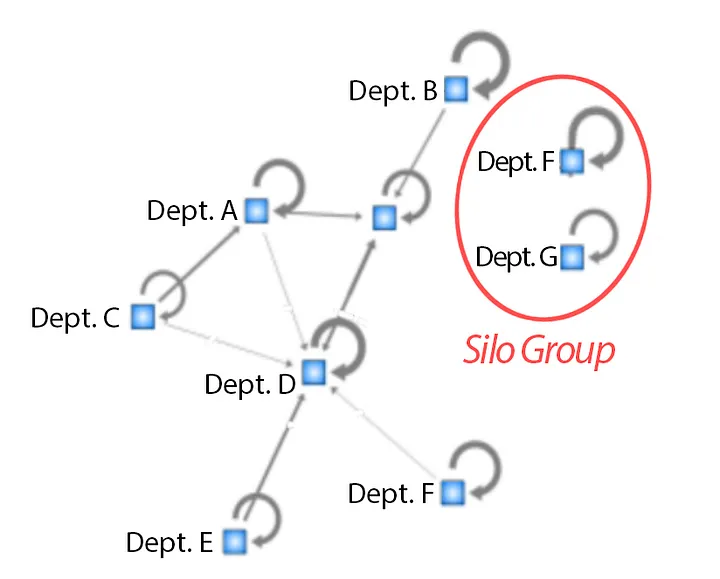
Enhancing Organizational Performance: The Power of Communication Data in HR Management

Effective HR Management by Utilizing Data
During the challenging pandemic time, the prevalence of remote jobs significantly surged across diverse industry sectors. However, this shift posed concerns for companies regarding dwindling productivity levels and a noticeable increase in skilled professionals resigning. To address this pressing situation, many organizations adopted monitoring systems and leveraged data-driven analysis to overcome the workforce condition. By implementing such solutions, these companies achieved remarkable outcomes, including a higher rate of new employee recruitment, a decline in turnover rates, and an improvement in overall productivity.
The Importance of Communication Data in HR Management
There are various data points utilized in HR management. However, among these various data types, communication data stands out as particularly well-suited for effective HR management due to its nature as an indicator of workers' performance.
-
Relational Analytics: in the communication sector is essential for extracting meaningful insights from the data about each worker's communication patterns. To fulfill this role, a graph database is optimized, allowing for efficient analysis. By providing real-time updates on employees' communication statuses based on their incoming and outgoing emails, the HR manager can regularly monitor and determine factors contributing to heavy workloads and communication gaps through graph-based relational analytics.
Leveraging Graph Technology for Effective HR solutions
The implementation of HR solutions utilizing graph technology enables the analysis of communication patterns within an organization, leading to improved business performance and a better understanding of overall efficiency and status. This approach offers comprehensive statistical insights for organization management and aids in predicting potential risk factors. Ultimately, harnessing graph technology in HR solutions enhances the effectiveness of organizational communication and optimizes business outcomes!
Solution 1. Mitigating Burnout Syndrome: Utilizing Workload Analysis
In order to prevent burnout syndrome from work overloads, HR solutions play a crucial role in identifying the primary sources of workload. By analyzing communication patterns, i.e., when and with which departments workers have the highest level of interaction, HR can gain a general understanding of where the heavy workloads are coming from. The application of the 'Betweenness Centralit' algorithm allows for the identification of nodes among multiple clusters that possess the most significant weighted edges and measures their communication intensity with other nodes.

*Betweenness Centrality: A way of detecting the amount of influence a node has over the flow of information in a graph.
This algorithm enables this HR solution to promptly detect and hit an alarm on the dashboard, highlighting workers and departments experiencing heavy workloads. The HR manager can then delve into the details to identify the specific tasks contributing the most to the workload. With this information at hand, the manager can explore options such as task redistribution among workers or departments to alleviate the burden.
Solution 2. Identifying silos within the organization
Within a company organization, two distinct groups often emerge: a heavy workload group and isolated groups (silos.) These groups can lead to inefficiency and workplace bullying. To address this issue, managers must first identify the root causes of silos by analyzing the communication graph within the organization.

*Silo Effect: Limit the interactions between members of difference branches of a company, thus leading to reduced productivity.
In a specific organizational context, the presence of multiple communication groups may indicate the existence of silos. Once identified, managers can implement internal monitoring to gain a deeper understanding of these silos. Graph-based analytics can assist in identifying employees with limited communication, individuals with unusual relationships, or ones who have resigned. By proactively detecting and addressing these issues, organizations can prevent any potential negative impacts they might have on the organization and help discover promising business value in-house.
Embracing Data-Driven Graph Technology for Efficient HR ManagementSIn today's digital era, the proliferation of real-time data analysis stems poses limitations on managing personnel within traditional systems. However, these challenges can be overcome swiftly and effortlessly through the adoption of data-driven graph technology in HR management.
By utilizing graph algorithms to analyze organizational communication patterns, the workload distribution and overall organizational performance can achieve substantial improvements. A prime example of an effective HR solution is Human Capital Management (HCM), which proves valuable across diverse industries for identifying and attracting talented individuals. Furthermore, by integrating HCM with other management systems such as ERP, Messenger, or compatible plug-ins, the graph algorithm can develop into a more seamless and efficient personnel management system. *Human Capital Management (HCM): A set of practices related to people resource management.
This integration of systems not only enhances convenience but also facilitates comprehensive management of personnel-related tasks. By embracing data-driven graph technology and integrating HR solutions with other management systems, companies can effectively navigate the challenges of modern personnel management, capitalize on talented individuals, and cultivate a more efficient and productive work environment.
Looking to build an HR solution? We are here to help! Contact us now at contact@agedb.io to learn more!
Interested in how AgensSQL Enterprise plus can work on for this? Learn more here